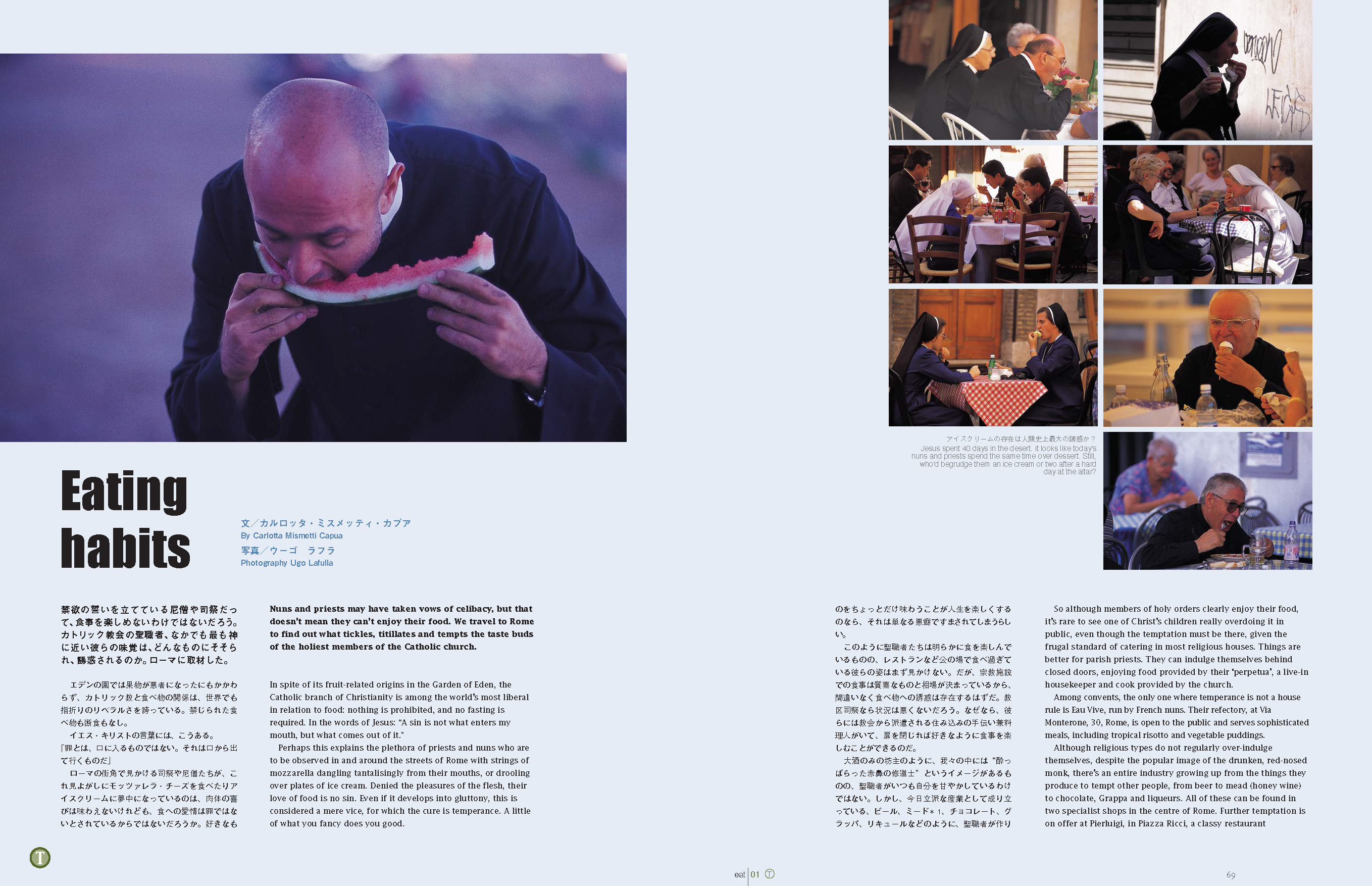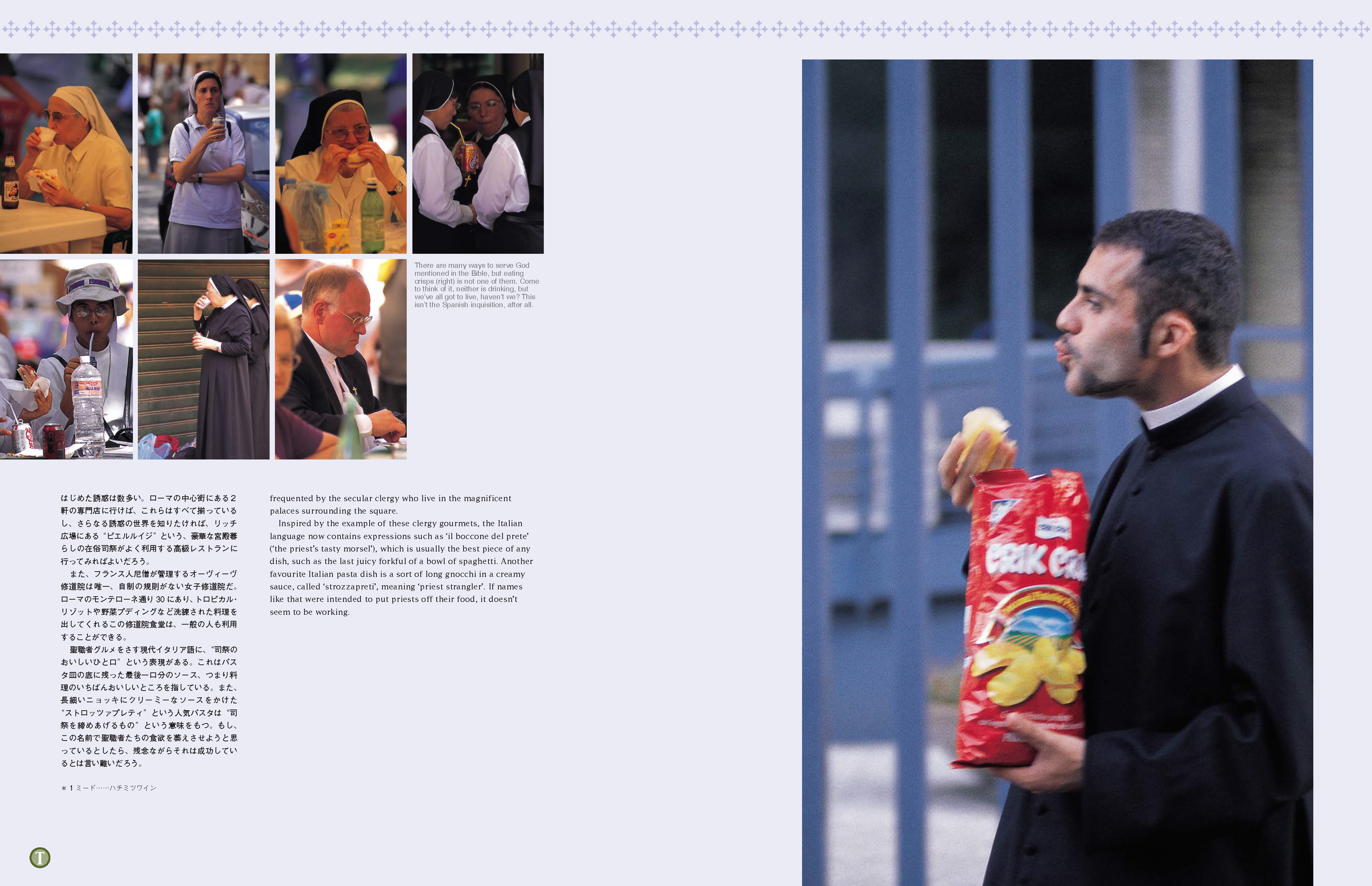Eating Habits
Eat Issue 1: Temptation
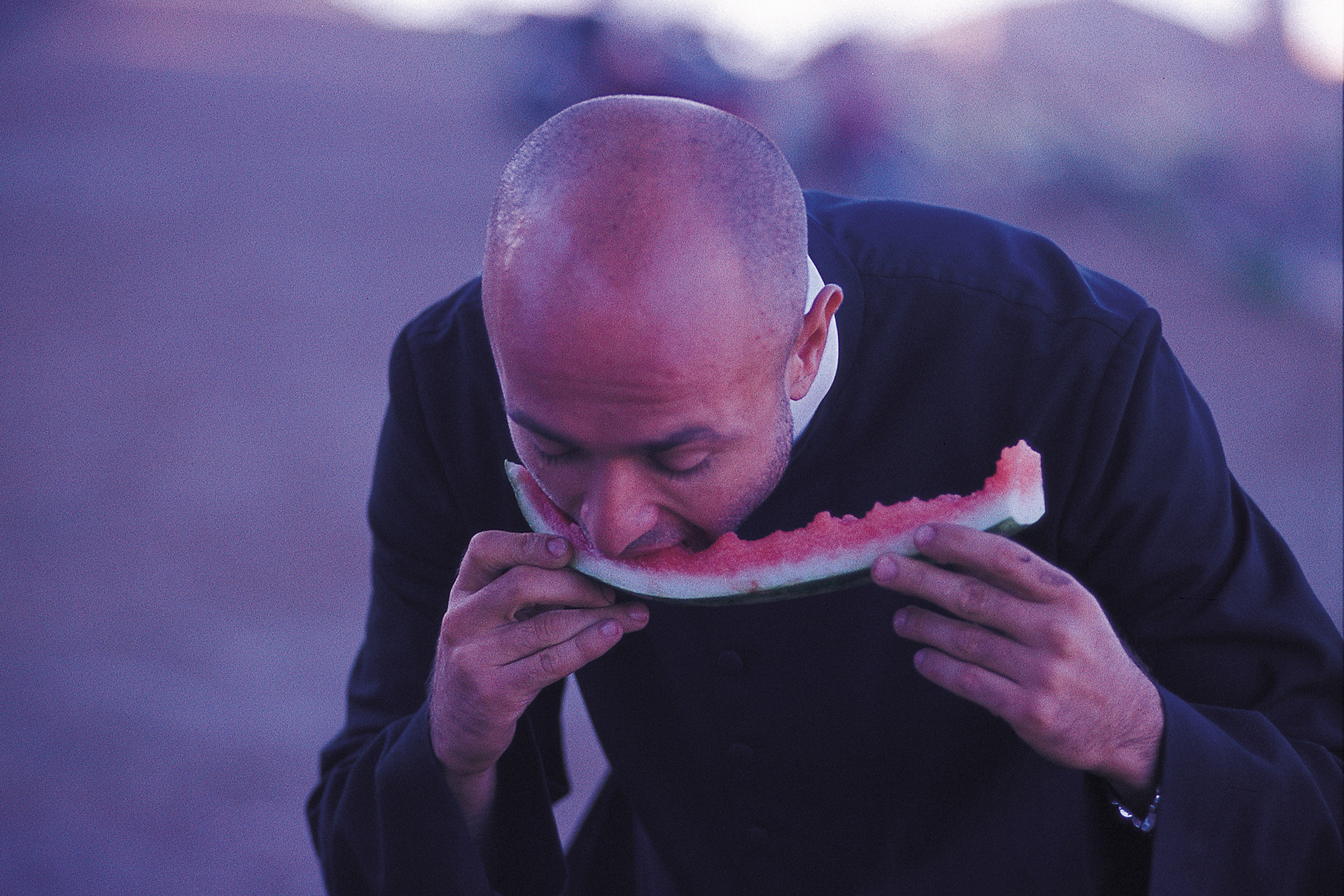
This article was originally published in October 2000.
Nuns and priests may have taken vows of celibacy, but that doesn’t mean they can’t enjoy their food. We travel to Rome to find out what tickles, titillates and tempts the taste buds of the holiest members of the Catholic church.
In spite of its fruit-related origins in the Garden of Eden, the Catholic branch of Christianity is among the world’s most liberal in relation to food: nothing is prohibited, and no fasting is required. In the words of Jesus: “A sin is not what enters my mouth, but what comes out of it.”
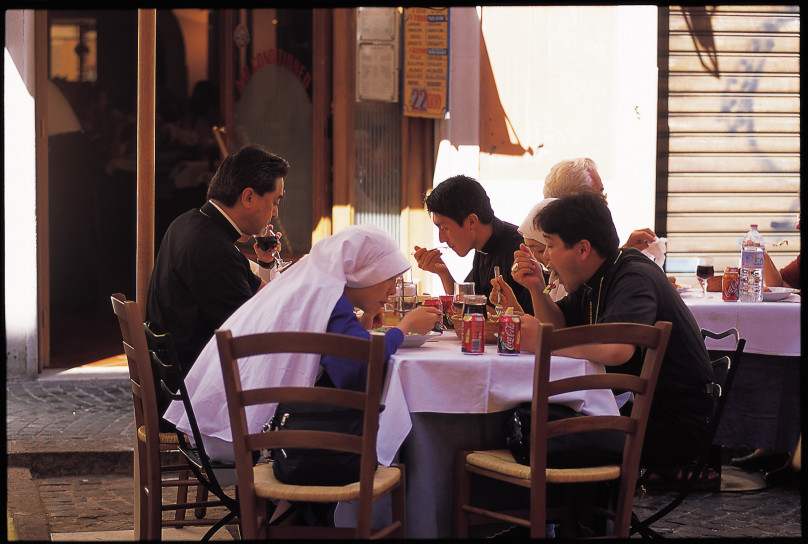
Jesus spent 40 days in the desert. It looks like todayʼs nuns and priests spend the same time over dessert. Still, whoʼd begrudge them an ice cream or two after a hard day at the altar?
Perhaps this explains the plethora of priests and nuns who are to be observed in and around the streets of Rome with strings of mozzarella dangling tantalisingly from their mouths, or drooling over plates of ice cream. Denied the pleasures of the flesh, their love of food is no sin. Even if it develops into gluttony, this is considered a mere vice, for which the cure is temperance. A little of what you fancy does you good.
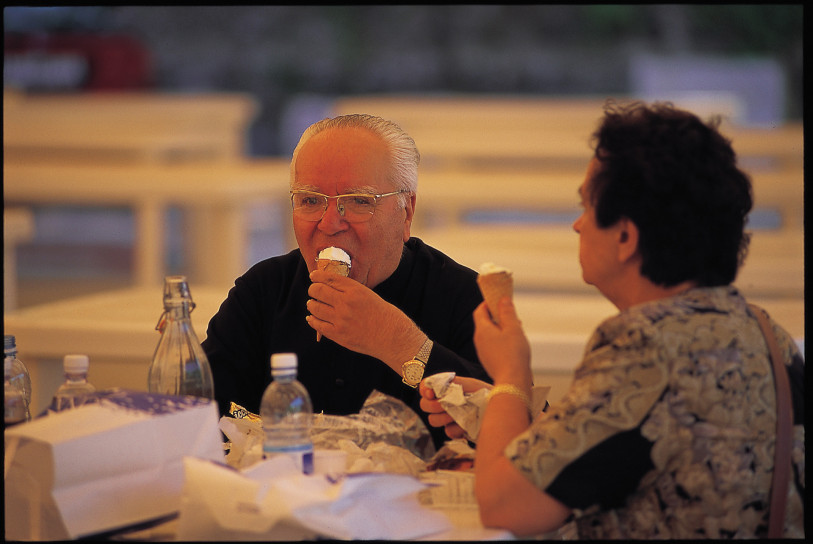
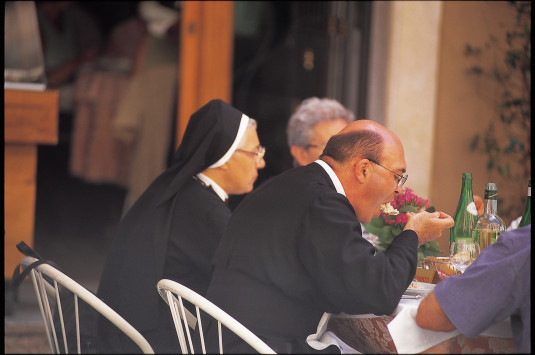
So although members of holy orders clearly enjoy their food, it’s rare to see one of Christ’s children really overdoing it in public, even though the temptation must be there, given the frugal standard of catering in most religious houses. Things are better for parish priests. They can indulge themselves behind closed doors, enjoying food provided by their ‘perpetua’, a live-in housekeeper and cook provided by the church.
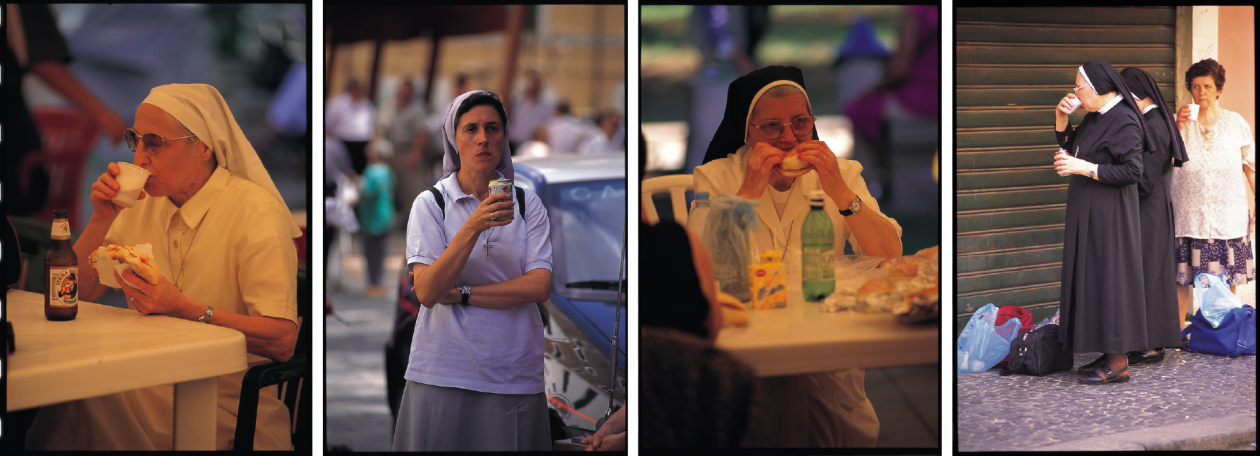
Among convents, the only one where temperance is not a house rule is Eau Vive, run by French nuns. Their refectory, at Via Monterone, 30, Rome, is open to the public and serves sophisticated meals, including tropical risotto and vegetable puddings.
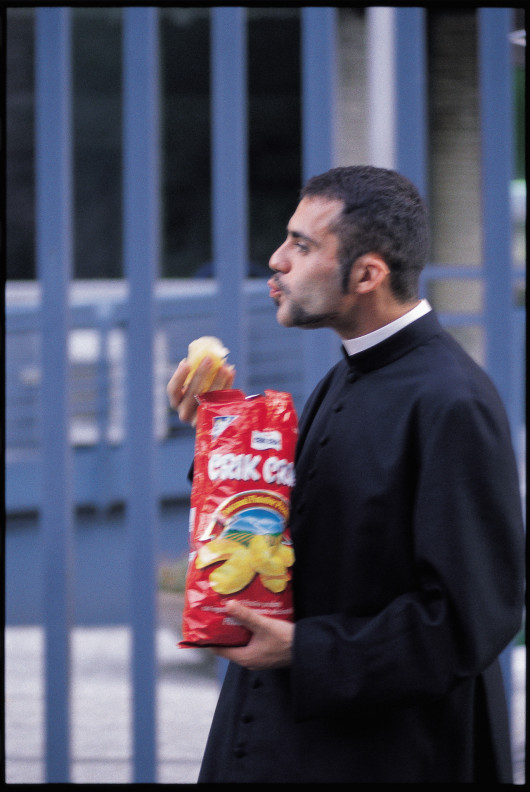
There are many ways to serve God mentioned in the Bible, but eating crisps is not one of them. Come to think of it, neither is drinking, but weʼve all got to live, havenʼt we? This isnʼt the Spanish inquisition, after all.
Although religious types do not regularly over-indulge themselves, despite the popular image of the drunken, red-nosed monk, there’s an entire industry growing up from the things they produce to tempt other people, from beer to mead (honey wine) to chocolate, Grappa and liqueurs. All of these can be found in two specialist shops in the centre of Rome. Further temptation is on offer at Pierluigi, in Piazza Ricci, a classy restaurant frequented by the secular clergy who live in the magnificent palaces surrounding the square.
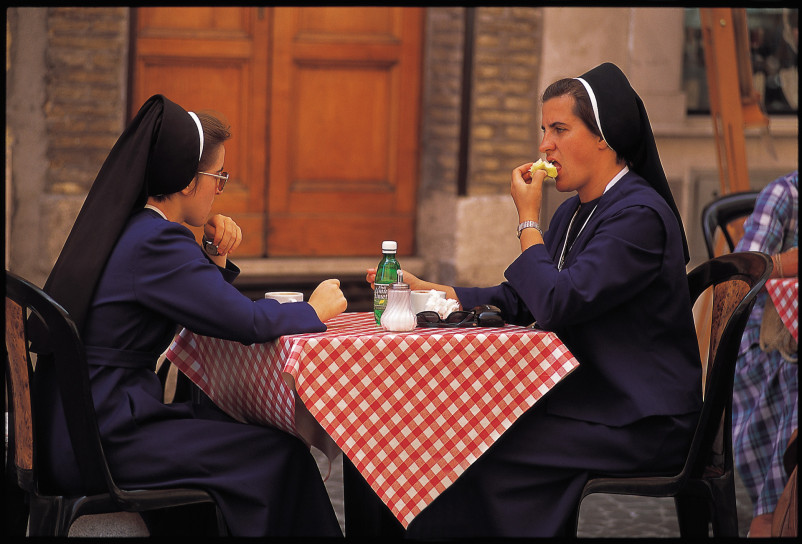
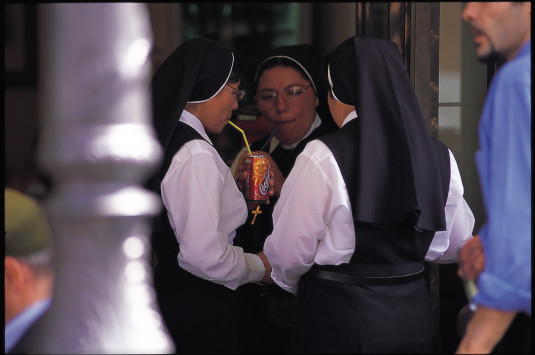
Inspired by the example of these clergy gourmets, the Italian language now contains expressions such as ‘il boccone del prete’ (‘the priest’s tasty morsel’), which is usually the best piece of any dish, such as the last juicy forkful of a bowl of spaghetti. Another favourite Italian pasta dish is a sort of long gnocchi in a creamy sauce, called ‘strozzapreti’, meaning ‘priest strangler’. If names like that were intended to put priests off their food, it doesn’t seem to be working.
Text: Carlotta Mismetti Capua / Photo: Ugo Lafulla
この記事は2000年10月に公開されたものです。
文/カルロッタ・ミスメッティ・カプア 写真/ウーゴラフラ
